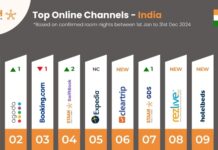
Current Talent Status and Hiring trends:
In the last quarter of 2013, Gallup released a 142-country study on the State of the Global Workplace where it was revealed that only 13% of employees worldwide are engaged at work. This meant that about 1 in 8 workers, some 180 million employees in the countries studied were committed to their jobs and likely to be making positive contributions to their organizations. The bulk of employees worldwide i.e. 63% are ‘not engaged’, meaning they lack motivation and are less likely to invest discretionary effort in organizational goals or outcomes. And 24% are ‘actively disengaged,’ indicating they are unhappy and unproductive at work and liable to spread negativity to co-workers. In rough numbers, this translates into 900 million not engaged and 340 million actively disengaged workers around the globe. As per the study, in India, the highly engaged workforce is lowest at a startlingly 6-8% seemingly crying for the want of good jobs. Before a study of this size and scale is taken up yet again, we may be able to make some use of its findings.
Since last couple of years, at the backdrop of global recession and jobs becoming scarce, retention of top talent and increasing leadership gaps have become urgent priorities for HR to be resolved.
The hiring talent today is much younger, ambitious, risk bearing, more entrepreneurial in nature, experimental and ready to work under pressure. There is also a shift in the outlook of what they seek to derive or aspire from their respective jobs and roles. Their orientation is more towards gaining experience rather than career building, latter being the focus almost a decade ago. These factors apparently contribute to creating a different set of culture not as evidently present before, that of ‘wealth creation’. They are hyper-connected via social media enabling them with huge networks of job pools and sources of hire. During intervals they spend quality time to revitalise and renew themselves by adding more knowledge and skills. This attitude enables them to cope and lead in the race of skills’ and knowledge obsolescence. They understand the power of differentiation and its key drivers both at personal front and that of the organisation they would work for.
The traditional talent management involved recruitment for growth, crisis buffer, and employer branding and handling the burden of various miscellaneous functions within the organization. But now talent has altered and therefore has been relooked in order to gain advantage through HR on the basis of the dynamics of business environment. Various strategic capabilities, role and culture are re-defined for strategic alignment of HR with businesses. There is an auto push for HR to seek transformation too.

While the employees today are overwhelmed with the work moving to them via handheld devices and BYOD work culture, the numbers above do not show them as ‘highly engaged’ which further pushes the HR towards facing modern day challenges that come with technology advancements or otherwise as per business complexities. Leaders have to be developed at all levels, globally and locally as per the geographical business spread. Top management and leaders across the world are managing broader spans of control and larger teams spread across various continents. There is a disruption in HR technology but is still not mature to handle analytics and integration thus lacking real time feedback mechanisms for managers and leaders to respond. This also burdens the performance management and measurement matrix further leading to weak succession planning. The problems of solving the talent puzzle is most of the time left to HR to work around the plausible solutions in isolation. Innovation and success in talent management demands collaboration and engagement from CEOs or CXOs to be able to set talent definition straight, hire right, build further capabilities and nurture the potential.
The new talent acquisition has become highly dodgy for organizations as it has become taxing for them to find candidates with best attitude and aptitude demonstrating long term commitments with the organization. There are higher tendencies for organizations to change their work force composition or further alter talent acquisition models so as to hold their current manpower as much possible. The major bottlenecks HR operations face is around ‘adaptability’ whether to do with finances or with hiring new talent as per changing business strategies and success delivery models. The pressure to stay within the given budget is a stringent task that does not encourage enough trainings and mid- year performance reviews.
This year, HR will have to work in accordance with some talent imperatives like:
– Traditional top down management goals are going away, lesser hierarchies and flat structures are altering the way new talent is viewed while hiring. Leader readiness is significant.
– What all tactical and implementation tasks are possible to deliver and manage the employer’s brand
– Use of disruptive HR technologies like Big data or embedded analytics to arrive at best fit for open jobs to further help improve quality and pace of hire
– How the HR team drives performance and development keeping in mind the way fresh talent has evolved or needs to evolve and adapt to business systems and processes as per changing global workplaces
– What steps will be taken to ensure Management and Leadership are supported and provided a 360 degree overview to improve performance and delivery against goals
– Evaluate the existing corporate culture and if it needs further positive intervention
– Pressing the need to meet timelines ensuring competency and further planning
– Analyze what you have as talent and what you may need in near future
– Continuity of routine and hygiene tasks – providing career opportunities, agility and mobility more than ever before
– Recognition and rewards will have to be seamlessly integrated within the structure of training, development, coaching or mentoring and reviews.
The Millennial employees are self directed highly mobile learners and do not walk in a herd. They command simple models of work engagement along with dignity at workplace. They prefer to be coached or inspired for delivering expected performance rather than being measured.
It is necessary for every organization to understand that recruitment should be customized on the basis of industry trends and preferences. Parallel to this, every HR department to believe their functions are making an impact, they must receive a fair feedback from top management about their efficiency in hiring best suited talent, adapting to employee working needs, planning well for future talent acquisition and creating a reputation for contributing to sound business decisions of a company. As their workforce spends considerable time on internet, social collaboration and transparency cannot be ignored. Administrative tools of assessment, reviews or engagements cannot be kept too complex or time consuming. Time is critical in success of deployment of talent management strategies. Like the many socio economic growth pillars of industrial age that may have come to the end of their life cycle, recruiting and managing talent is also demanding new thinking and reinventing human capital to realise it optimum potential. It is of prime importance the HR and management collaborate to channelize their efforts of planning and designing talent management strategies that will help them accelerate growth and newer performance benchmarks surpassing industry average.
Author:
Dr. Yasho V Verma is a Management Thinker & Philosopher, former COO at LG, an academician, a startup mentor and a veteran in consumer durables. Currently, he is advisor to Videocon and a member on board of Dena Bank. Dr. Verma is a PHD in organizational behavior from IIT Kharagpur. He can be reached at yasho.v.verma@gmail.com
Disclaimer : The content including all the data, information, illustrations, graphs, tables or other visual representations written or compiled in the manner as above is owned by the author. All or part/s of the document cannot be republished without prior permission and consent from the holder. Pictures to be used with mentioned credits.






























